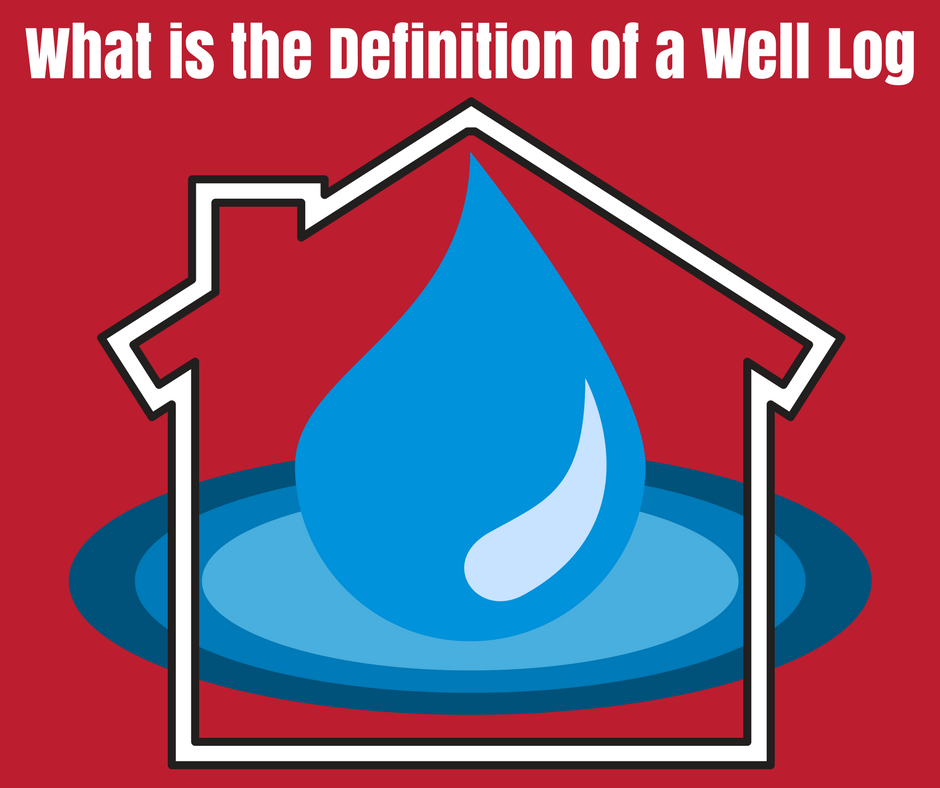Learn The Importance Of Keeping A Water Well Log
As a homeowner with a private well, you are sitting on a valuable asset that can increase the asking price of your home if it's been properly maintained. When it comes time to sell your home, your well log can provide a buyer with vital information on the history and health of your water well.
Let's explore some of the information that should be in your water well log and why it is one of the most valuable documents that you can have when it comes time to sell your home.
What is the Definition of a Well Log
Your well log was created when well drilling was originally completed on your property. It contains vital information on the history of the well and the ground surrounding it. A water well contractor is required to file a well log in the state where the new well is located upon completion. However, as the homeowner, you should be provided with a copy of the original document. It's a valuable asset to maintain in the event your well ever needs maintenance. Quick access and an understanding of the well log can be critical at certain times.
Well logs can differ from state to state, in fact, some states refer to them as water well records or drilling reports. However, most of them contain the same basic information.
Water Well Log Layouts
Regardless of what they are called, most will contain the same information. For example, a reference number unique to the well will be at the top of the page, usually in the upper left corner. This is followed by areas that provide the original owner's name, the location of the well, construction and well driller details, well water testing information and geological formations encountered by the contractor when the original well was drilled.
Most logs will also contain a comments section where the contractor can provide any additional information they deem important. Here's a little more information on the sections you'll find included in your well log.
Owner and Location
This is where the owner's name and property address are listed at the time the original well was drilled. This helps you to locate the well on topographical maps. In some states, the well drilling contractor's name is included in this section.
Detailed Construction and Contractor Information
This section is essential if the new owner ever has problems with the water well system. It describes the materials used as well as the reason for the well, the drilling method used, the depth of the well, information on the casing, materials used, size and type of screen and the type of pump. Some reports will also include the contractor information and the grout used in the construction process.
- As the homeowner or buyer of the home, it's important to understand the terms used in this section. A well's casing is the watertight, tubular structure that goes down into the well. It prevents pollutants from entering the aquifer. The screen is the filtering device below the casing that prevents unwanted materials from entering your water. Grout is the material used to seal the casing into place.
Well Testing Information
When a well is constructed it is subjected to an extended testing period. Tests include those for production rate measured in gallons per minute, static water level which is the distance between the ground level and the top of the water in the well and drawdown or the difference between static water level and the level of water during pumping.
The data gathered from these tests is used to forecast the long-term yield of the well. Most homes require a yield of 6 to 12 gpm (Gallons Per Minute). If the well produces less, it may be necessary to include a pressurized storage tank in the home's water system.
While these test results are included in the well log, it's also important to have your well tested annually for water quality. While not formally included in the well log, keeping copies of annual tests can be useful. It can show the long-term water quality and the health of your home's water supply.
Geological Formations Encountered
This area is typically called the well log, like the name of the report. It details everything the contractor encountered underground during the drilling of the well. It gives precise information. If, for instance, the first 10 feet below the surface is composed of yellow clay, followed by 6-feet of sand, and 20-feet of gray clay the report will read: 0-10 yellow clay, 10-16 sand, 16-26 gray clay. This information can help to identify the aquifer used and can be extremely beneficial if problems arise at a later date.
Your well log is a concise and complete record of all the facts surrounding your water well, from the day it was dug. If you are considering the purchase of a new home that is supplied by a private well, make sure to request an up to date well log.
If you are a homeowner selling a home with a private well, your well log can add value to your home. Supplementing your well log with copies of your annual water testing reports can provide your buyer with all of the information they need to make an informed decision about purchasing your home.
Many states require a copy of your well log be included in the documents provided to the buyer before the sale. Make sure yours is available and up to date before you list your home for sale.


